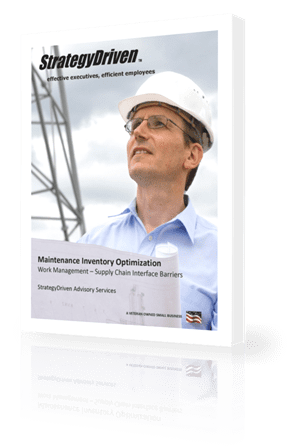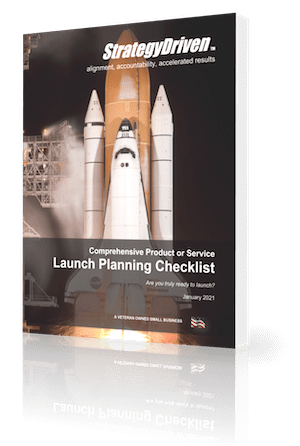11 Strategies for Successful EOS Implementation

Entrepreneurial Operating System (EOS) implementation can be a transformative journey for organizations, enabling them to achieve operational excellence and drive sustainable growth. However, to ensure a successful EOS implementation, organizations need to have effective strategies in place. In this blog, we will explore 11 strategies that can help organizations achieve a successful EOS implementation and unlock their full potential. From defining clear objectives to fostering continuous improvement, these strategies can guide organizations on their EOS implementation journey.
Understanding EOS Implementation
EOS is a comprehensive framework that helps businesses achieve clarity, alignment, and traction toward their vision and goals. EOS provides a set of simple yet powerful tools and concepts that can be implemented across an organization to streamline operations, improve communication, and drive results. EOS implementation involves a structured process of aligning the organization’s vision, people, data, and processes to achieve operational excellence. It typically includes elements such as defining the organization’s core values, creating a clear vision for the future, setting specific goals and priorities, and establishing a system for accountability and performance measurement.
Strategy 1: Define Clear Objectives and Goals
The first step towards a successful EOS implementation is to define clear objectives and goals. This involves identifying the desired outcomes of the implementation, aligning them with the overall organizational strategy, and establishing measurable and achievable targets. The objectives and goals should be communicated clearly to all stakeholders, including employees, leaders, and the EOS implementer, to ensure a shared understanding and commitment to the EOS vision.
Strategy 2: Create a Detailed Implementation Plan
A comprehensive implementation plan is crucial for the successful execution of EOS. This plan should include a detailed roadmap with clear timelines, responsibilities, and milestones. It should also address potential risks and challenges and outline mitigation strategies. Securing necessary resources, such as budget, technology, and personnel, should also be included in the implementation plan. The plan should be regularly reviewed and updated as needed to ensure alignment with the overall organizational strategy and changing business needs.
Strategy 3: Foster Strong Leadership and Change Management
Leadership plays a critical role in the success of EOS implementation. A dedicated leadership team should be appointed to oversee the implementation process and ensure that leaders are aligned and committed to the EOS vision. Change management strategies should be in place to address resistance and challenges that may arise during the implementation journey. This includes effective communication, stakeholder engagement, and a supportive approach to managing change.
Strategy 4: Engage and Train Employees
Employees are key stakeholders in the EOS implementation process, and their engagement and support are critical for success. Employees should be communicated the purpose, benefits, and expectations of EOS implementation. Regular training and development opportunities should be provided to build employees’ capabilities in the EOS framework. Employees should also be encouraged to actively participate and provide feedback during the implementation process, as their insights can contribute to the success of the implementation.
Strategy 5: Monitor and Measure Progress
Monitoring and measuring the progress of EOS implementation is essential to ensure that it is on track toward achieving the defined objectives and goals. Key performance indicators (KPIs) should be established to track the progress of EOS implementation, and regular reviews should be conducted to assess the effectiveness of the implementation efforts. Data analysis and feedback from stakeholders, including employees and leaders, should be used to identify areas that require improvement and take necessary actions accordingly.
Strategy 6: Foster Continuous Improvement
EOS implementation is not a one-time event but rather a continuous journey toward excellence. Organizations should foster a culture of continuous improvement where feedback, learning, and innovation are encouraged. This includes regularly reviewing and updating the EOS framework, incorporating best practices, and driving innovation to optimize organizational performance. Continuous improvement efforts should be integrated into the organizational DNA, ensuring that the EOS implementation is sustained and continually refined to meet changing business needs.
Strategy 7: Aligning Performance Metrics
To ensure that the EOS implementation is effective, aligning performance metrics and key performance indicators (KPIs) with the organization’s overall vision and goals is crucial. This involves setting clear expectations for employees, defining measurable objectives, and regularly monitoring and reviewing progress against these metrics. By aligning performance metrics with the EOS framework, organizations can create a culture of accountability and continuous improvement, driving better results.
Strategy 8: Effective Communication
Communication plays a critical role in the success of any organizational change initiative, including EOS implementation. It is essential to establish open and transparent communication channels throughout the implementation process, from the top leadership to all levels of employees. This includes regular updates, clarifying roles and responsibilities, addressing concerns, and soliciting feedback. Effective communication ensures that employees are informed, engaged, and committed to the EOS framework, increasing the likelihood of successful implementation.
Strategy 9: Training and Development
Providing adequate training and development opportunities to employees is vital for the successful implementation of EOS. This includes educating employees about the EOS framework, its principles, and how it aligns with the organization’s vision and goals. Training should also focus on building the skills and competencies required to effectively implement EOS, such as problem-solving, decision-making, collaboration, and leadership. Investing in training and development ensures that employees are equipped with the knowledge and skills to fully embrace and implement EOS in their day-to-day work.
Strategy 10: Flexibility and Adaptability
Organizations should recognize that EOS implementation is a dynamic and iterative process that may require adjustments along the way. Flexibility and adaptability to changing circumstances, feedback, and lessons learned are crucial for successful implementation. Organizations should be open to revisiting and refining their EOS implementation plan as needed based on the evolving needs and challenges of the organization. Flexibility and adaptability allow organizations to respond to changing circumstances and optimize the EOS implementation for maximum effectiveness.
Strategy 11: Employee Involvement and Ownership
Involving employees in the EOS implementation process and giving them a sense of ownership can significantly impact the success of the implementation. This includes engaging employees at all levels of the organization, from leadership to frontline workers, in the development and execution of the EOS implementation plan. Encouraging employee feedback, suggestions, and contributions can help create a sense of ownership and commitment to the EOS framework. When employees feel empowered and involved in the process, they are more likely to embrace the changes and actively participate in implementing EOS in their day-to-day work.
Conclusion
A well-planned and executed EOS implementation can pave the way for organizational excellence, driving sustainable growth and ensuring long-term success. By following the strategies outlined in this blog and working with an experienced EOS Implementer, organizations can navigate the implementation process effectively and reap the benefits of a streamlined and high-performing operating system. Embracing EOS as a strategic approach to managing the organization’s vision, people, data, and processes can empower organizations to achieve their strategic goals and thrive in today’s competitive business landscape.












Leave a Reply
Want to join the discussion?Feel free to contribute!